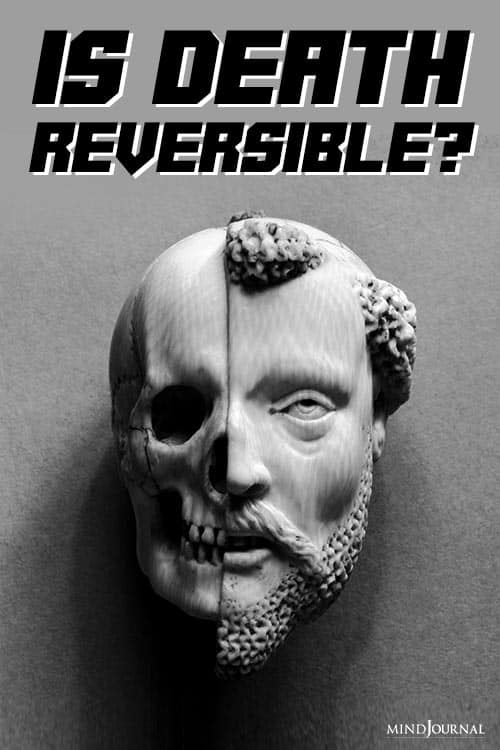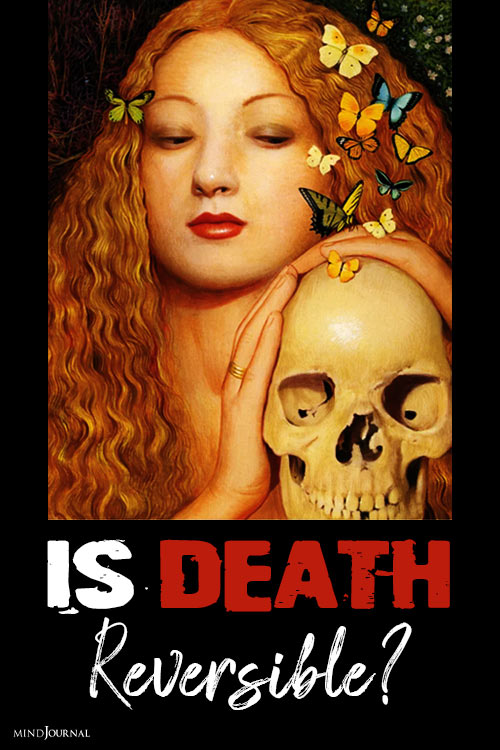Death is a natural and necessary caveat in the life of every living life. We know when there is no sign of life, a person would be declared dead. But the researchers of Yale School Of Medicine think otherwise, Brains, they figured out, can be brought back to life. So, is there a way we can challenge the notion of mortality?
Is death reversible? An experiment that partially revived slaughterhouse pig brains raises questions about the precise endpoint of life.
In Brief
- Death has had a changing definition over the millennia. Originally, it meant cessation of breathing and a heart that had stopped.
- The advent of mechanical ventilators shifted the locus of death to the brain—dying became loss of brain function, an irreversible coma.
- Partial revival of pig brains hours after decapitation, which was demonstrated in a recent experiment, could again upend definitions of mortality.
“And death shall have no dominion”—Dylan Thomas, 1933
You will die, sooner or later. We all will. For everything that has a beginning has an end, an ineluctable consequence of the second law of thermodynamics.
Few of us like to think about this troubling fact. But once birthed, the thought of oblivion can’t be completely erased. It lurks in the unconscious shadows, ready to burst forth. In my case, it was only as a mature man that I became fully mortal.
I had wasted an entire evening playing an addictive, first-person shooter video game—running through subterranean halls, flooded corridors, nightmarishly turning tunnels, and empty plazas under a foreign sun, firing my weapons at hordes of aliens relentlessly pursuing me.
I went to bed, easily falling asleep but awoke abruptly a few hours later. Abstract knowledge had turned to felt reality—I was going to die! Not right there and then but eventually.

Evolution equipped our species with powerful defense mechanisms to deal with this foreknowledge—in particular, psychological suppression and religion.
The former prevents us from consciously acknowledging or dwelling on such uncomfortable truths while the latter reassures us by promising never-ending life in a Christian heaven, an eternal cycle of Buddhist reincarnations, or uploading of our mind to the Cloud, the 21st-century equivalent of rapture for nerds.
Death has no such dominion over nonhuman animals. Although they can grieve for dead offspring and companions, there is no credible evidence that apes, dogs, crows, and bees have minds sufficiently self-aware to be troubled by the insight that one day they will be no more. Thus, these defense mechanisms must have arisen in recent hominin evolution, in less than 10 million years.
Teachings from religious and philosophical traditions have long emphasized the opposite: look squarely into the hollow eyes of death to remove its sting. Daily meditation on nonbeing lessens its terror. As a scientist with intimations of my own mortality, my reflections turn toward understanding what death is.
Anyone who undertakes this quest will soon come to realize that death, this looming presence just over the horizon, is quite ill-defined from both a scientific as well as a medical point of view.
Related: What Near-Death Experiences Reveal about the Brain
FROM THE CHEST TO THE HEAD
Throughout history, everyone knew what death was. When somebody stopped breathing and his or her heart ceased beating for more than a few minutes, the person was, quite simply, dead. Death was a well-demarcated moment in time.
All of this changed with the advent of mechanical ventilators and cardiac pacemakers in the middle of the 20th century. Modern high-tech intensive care decoupled the heart and the lungs from the brain that is responsible for the mind, thought, and action.
In response to these technological developments, in 1968, the famous Report of the Ad Hoc Committee of the Harvard Medical School introduced the concept of death as an irreversible coma—that is, loss of brain function. This adjustment was given the force of law by the Uniform Determination of Death Act in 1981.
We investigate the question – is death reversible?
This document defines death as either irreversible cessation of circulatory and respiratory functions or irreversible halting of brain function. Quite simply, when your brain is dead, you are dead.
This definition is, by and large, in use throughout most of the advanced world. The locus of death shifted from the chest to the brain (and from public view into the private sphere of the hospital room), with the exact time of actual brain death uncertain.
This rapid and widespread acceptance of brain death, reaffirmed by a presidential commission in 2008, is remarkable when compared with the ongoing controversy around abortion and the beginning of life. It may perhaps be reflective of another little-noticed asymmetry—people agonize about what happens in the hereafter but rarely about where they were before being born!
The vast majority of deaths still occur following cardiopulmonary cessation, which then terminates brain functioning as well. Neurological death—specified by irreversible coma, absence of responses, brain stem reflexes, or respiration—is uncommon beyond the intensive care unit, where patients with traumatic or anoxic brain injury or toxic-metabolic coma (say, following an opioid overdose) are typically admitted.
Brain death may be the defining factor, but that does not simplify clinical diagnosis—biological processes can persist after the brain shuts down. Indeed, a brain-dead body can be kept “alive” or on “life support” for hours, days, or longer.
For grieving relatives and friends, it is challenging to understand what is happening. When visiting the ICU, they see the chest moving in and out, they feel a pulse, the skin pallor looks normal, and the body is warm. Looking healthier than some of the other denizens of the ICU, their beloved is now legally a corpse, a beating-heart cadaver.
The body is ventilated and kept suspended in this quasi-living state because it is now a potential organ donor. If permission has been obtained, the organs can be harvested from the cadaver to help the living who need a heart, kidney, liver, or lung, which are always in short supply.
Brain-dead bodies can continue to grow fingernails, to menstruate, with at least some working immune function that allows them to fight off infections. There are more than 30 known cases of pregnant brain-dead mothers placed on a ventilator to support the gestation of a surviving fetus, born weeks or months (in one case 107 days) after the mother became brain-dead.
In a widely discussed 2018 story in the New Yorker, a young woman, Jahi McMath, was maintained on ventilation in a home care setting in New Jersey by her family following her brain death in a hospital in California. To the law and established medical consensus, she was dead. To her loving family, she was alive for close to five years until she died from bleeding associated with liver failure.
Related: A Link Between The Date Of Birth And Date Of Death
Despite technological advances, biology and medicine still lack a coherent and principled understanding of what precisely defines birth and death—the two bookends that delimit life. Aristotle wrote in De anima more than two millennia ago that any living body is more than the sum of its parts.
He taught that the vegetative soul of any organism, whether a plant, animal, or person, is the form of the essence of this living thing.
The essence of a vegetative soul encompasses its powers of nutrition, growth, and reproduction that depend on the body. When these vital capacities are gone, the organism ceases to be animate (a term whose roots lead back to anima, Latin for “soul”).
The sensitive soul mediates the capacities of both animals and humans to sense the world and their bodies. It is the closest to what we moderns call “conscious experience.” Finally, the rational soul is the sole province of people, mediating reason, language, and speech. Of course, this is now increasingly mimicked by artificial intelligence algorithms.
The modern emphasis on machine learning, genomics, proteomics, and big data provides the illusion of understanding what the vegetative soul is. Yet it obscures the depth of our ignorance about what explains the breakdown of the vegetative soul.
A conceptual challenge remains to define what constitutes anyone’s living body—which is clearly more than the sum of its individual organs. How can one precisely delimit this body in space (are clothing, dental implants, and contact lenses part of the body?) and in time (its beginning and its end)?
Note the word “irreversible” in the contemporary definition of neurological death. In the absence of a precise conceptual formulation of when an organism is alive or dead, the concept of irreversibility depends on the technology du jour, which is constantly evolving.
What at the beginning of the 20th century was irreversible—cessation of breathing—became reversible by the end of the century. Is it too difficult to contemplate that the same may be true for brain death? A recent experiment suggests this idea is not just a wild imagining.
PARTIAL REVIVAL OF DEAD BRAINS
This year a large team of physicians and scientists at the Yale School of Medicine under Nenad Sestan took advantage of hundreds of pigs killed at a Department of Agriculture–approved slaughterhouse for a remarkable experiment, published in the journal Nature.
The researchers removed the brains from their skulls and connected the carotid arteries and veins to a perfusion device that mimics a beating heart. It circulates a kind of artificial blood, a synthetic mixture of compounds that carry oxygen and drugs that protect cells from damage.
The magic resides in the exact molecular constitution of the circulating solution. Think of closed-circuit dialysis machines that thousands of patients use daily to flush out toxins from their bodies because their own kidneys have stopped working.
These machines are needed because when blood stops flowing through the large, energy-demanding brain, oxygen stores are depleted within seconds, and consciousness is lost.
Depriving a brain of oxygen and blood flow for more than a few minutes begins to trigger irreversible damage. Cells start degenerating in all sorts of ways (tissue damage and decomposition, edema, and so on) that are readily visible under a microscope.
The Sestan team studied the brains’ viability four hours after the pigs were electrically stunned, bled out, and decapitated. (If this sounds gruesome, it is what happens to livestock in an abattoir, one reason I’m a vegetarian.)
The researchers compared a variety of biological indicators with those of postmortem control brains from pigs that did not undergo this perfusion procedure four hours after death, an eternity for the sensitive nervous system.
Related: Consciousness Persist Even after Death, New Study Suggests
At first glance, the restored brains with the circulating solution appeared relatively normal. As the compound circulated, the fine net of arteries, capillaries, and veins that suffuse brain tissue responded appropriately; the tissue integrity was preserved with a reduction in swelling that leads to cell death; synapses, neurons, and their output wires (axons) looked normal.
Glial cells, the underappreciated entities supporting neurons proper, showed some functionality, and the brain consumed oxygen and glucose, the universal energy currency of the body, an indication of some metabolic functioning.
The title of the researchers’ paper announcing their technology boldly states “Restoration of Brain Circulation and Cellular Functions Hours Post-mortem.”
What was not present in these results were brain waves of the kind familiar from electroencephalographic (EEG) recordings. Electrodes placed onto the surface of the pig brains measured no spontaneous global electrical activity: none of the deep-slow waves that march in lockstep across the cerebral cortex during deep sleep, no abrupt paroxysm of electrical activity followed by silence—what is known as burst suppression.
Only a flat line everywhere—a global isoelectric line—implies a complete absence of any sort of consciousness. A silent brain, electrically speaking, is not harboring an experiencing mind. But this was not a surprise.
This state was exactly what was intended by Sestan and his co-workers, which is why the circulating solution contained a cocktail of drugs that suppresses neuronal function and corresponding synaptic communication among cells.
Even with the absence of brain waves, it came as a surprise to me, a working neuroscientist, that individual pig cortical neurons still retained their capacity to generate electrical and synaptic activity.
The Yale team demonstrated this by snipping a tiny sliver of neural tissue from these brains, washing off the perfused solution, and then exciting individual neurons via an electric current delivered by a tiny electrode.
Some of these cells responded appropriately by generating one or a series of the stereotypical electrical pulses, so-called action potentials or spikes, that are the universal idiom of rapid communication in any advanced nervous system.
This finding raises a profound question: What would happen if the team were to remove the neural-activity blockers from the solution suffusing the brain? Most likely nothing. Just because some individual neurons retain some potential for excitability does not imply that millions and millions of neurons can spontaneously self-organize and break out into an electrical chorus.
And yet! It cannot be ruled out that with some kind of external help, a sort of cortical defibrillator, these “dead” brains could be booted up, reviving the brain rhythms characteristic of the living brain.
So, Is Death Reversible?
Related: How To Deal With Death and Dying As You Age?
To state the obvious, decapitating any sentient creature and letting its brain bleed out is not conducive to its well-being. Reanimating it after such a major trauma could well lead to profound pathologies, such as massive epileptic seizures, delirium, deep-seated pain, distress, psychosis, and so on.
No creature should ever suffer in this manner. It is precisely to avoid this situation that the Yale team obstructed neuronal function.
This brings me to the elephant in the room. Can this procedure be applied to the human brain? Before you recoil, think of the following. What would you do if your child or partner were found drowned or overdosed, without a pulse or breath for hours?
Today it is likely that they would be declared dead. Could this change tomorrow with the kind of technology pioneered by the Yale group? Isn’t that a worthwhile goal to pursue?
The pig brain is a large brain, unlike one of the much smaller mice, by far the most popular laboratory animal. The pig cortex is highly folded, like the human cortex. Neurosurgical procedures are routinely tested on pigs before moving to human trials. So, the technical answer is yes; in principle, this could be done.
Related: What Happens After Death?
But Should It Be Done?
Certainly not until we understand much better whether a reconstituted animal brain shows global electrical activity typical of a healthy brain, without stress responses indicative of pain, distress, or agony. The field as a whole should pause and discuss the medical, scientific, legal, ethical, philosophical, and political questions of such research with all stakeholders.
Yet the fear of the grim reaper will not be denied. Sooner or later, somewhere on the planet’s face, someone will try to temporarily cheat death.
Written By: Christof Koch Originally Appeared On: Scientific American Republished with permission.












Leave a Reply